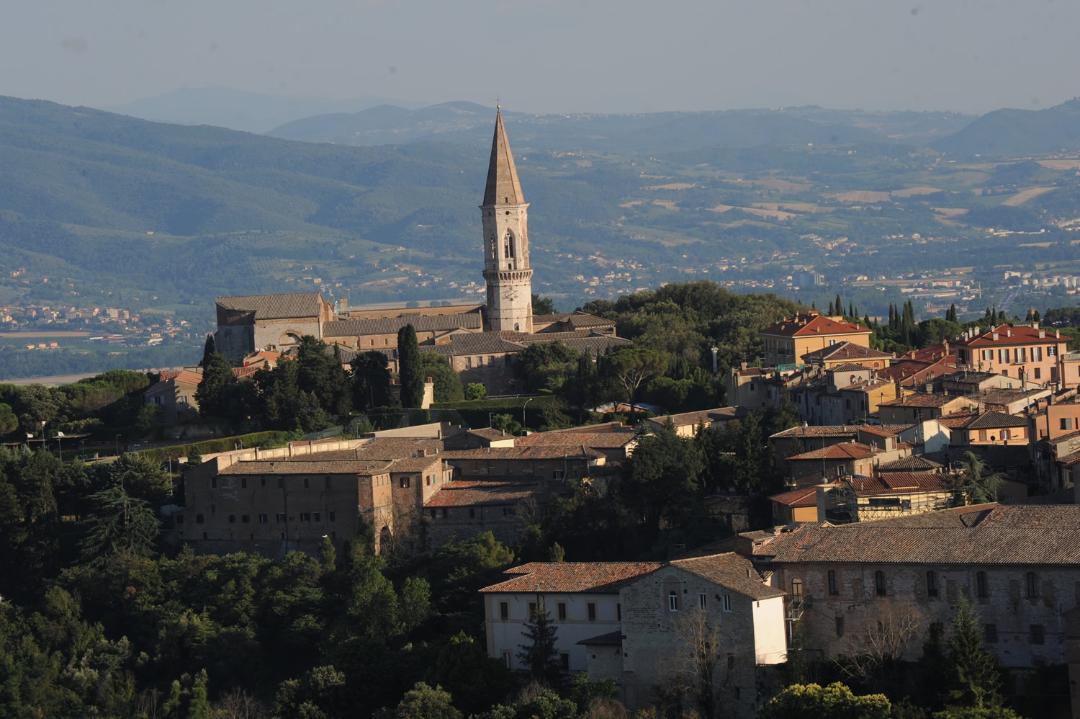Umbria's excellent culinary traditions have given us many delicious recipes; some are traditional to precise areas whilst others are connected to specific times of the year or to particular holidays. We will take you on a journey to discover the sweetest and tastiest Umbrian flavours.
There really are a great deal of recipes for sweets and desserts connected to the Christmas period. Panpepato ternano from Terni is very popular and brings together the bitter flavour of dark chocolate, the sweetness of honey and candied fruit, the intense flavour of nuts (walnuts, almonds, pine nuts and hazelnuts) and spices (nutmeg, cinnamon and pepper). In the Perugia area, it is tradition to make Pinoccate, diamond-shaped sweets made of sugar and pine nuts, which can either be white - vanilla flavoured, or dark- chocolate flavoured. Also from the Perugia area, and made for the Christmas period are Pinolate – little dried round biscuits made of almonds and pine nuts – as well as Torciglione, an almond-based dry cake that is shaped to look like a coiled snake. In the Spoleto area, from autumn until January it is common to make Attorta or Serpentone, a sweet made of puff pastry filled with apple, cocoa powder and walnuts which is then rolled into a spiral shape, whilst in the area of Assisi, Spello and Foligno a very similar sweet is made called ‘Rocciata'. It is different to Attorta in its shape and in the fact it also contains figs, plums, hazelnuts, almonds, pine nuts. In the municipalities of Deruta and Torgiano it isn't Christmas without Pammelati, a sweet made of breadcrumbs, walnuts, cinnamon, honey, orange peel and pine nuts and formed into a round, oblong shape.
Maccheroni dolci are a speciality from the areas around Todi and Orvieto which are traditionally prepared for two important occasions, the night before All Saints' Day and Christmas Eve. The preparation is the same as a classic dried pasta dish, but instead of olive oil and cheese, honey and hazelnuts are used in their place. In Perugia, for the celebration of All Saints' Day on the 1st November, it is tradition to make ‘Fave dei morti' or ‘Stinchetti', small almond-based biscuits which come in both soft and hard versions.
In Perugia, on the 29th January, the windows of patisseries and bakeries are filled with Torcolo di San Costanzo, a simple ring-shaped cake made in honour of the town's patron saint, which has a bread dough mix at its base.
Amongst the traditional Umbrian sweets for Carnival, the most popular are Frappe – a impasto egg, flour, butter, sugar and yeast, cut into strips, tied into small knots and fried in boiling oil – Strufoli in local dialect or Castagnole, depending on in which part of Umbria they are made and of different sizes- the former are bigger, the latter are smaller and look like a small "gnocchi". Both strufoli and castagnole are fried and then served soaked in Alchermes liqueur or covered in honey or sugar. Another Carnival sweet is the Cicerchiata Umbra, a very old recipe using simple ingredients like flour, oil and a little sugar; the only "luxuries" of this recipe are the honey and the coloured hundreds and thousands that it is covered in. Cicerchiata takes its name from the cicerchia, a legume that it looks like. Today it is not widely known, other than by fans of traditional food. As far as the Easter period goes, the most famous sweet is surely Ciaramicola from Perugia, a ring-shaped, red cake covered with a white glacé icing and brightly coloured hundreds and thousands.
Instead the famous Tozzetti are made throughout the year and are not connected to a specific holiday. These are almond biscuit-like pastries that are delicious dunked in a glass of vinsanto.



































